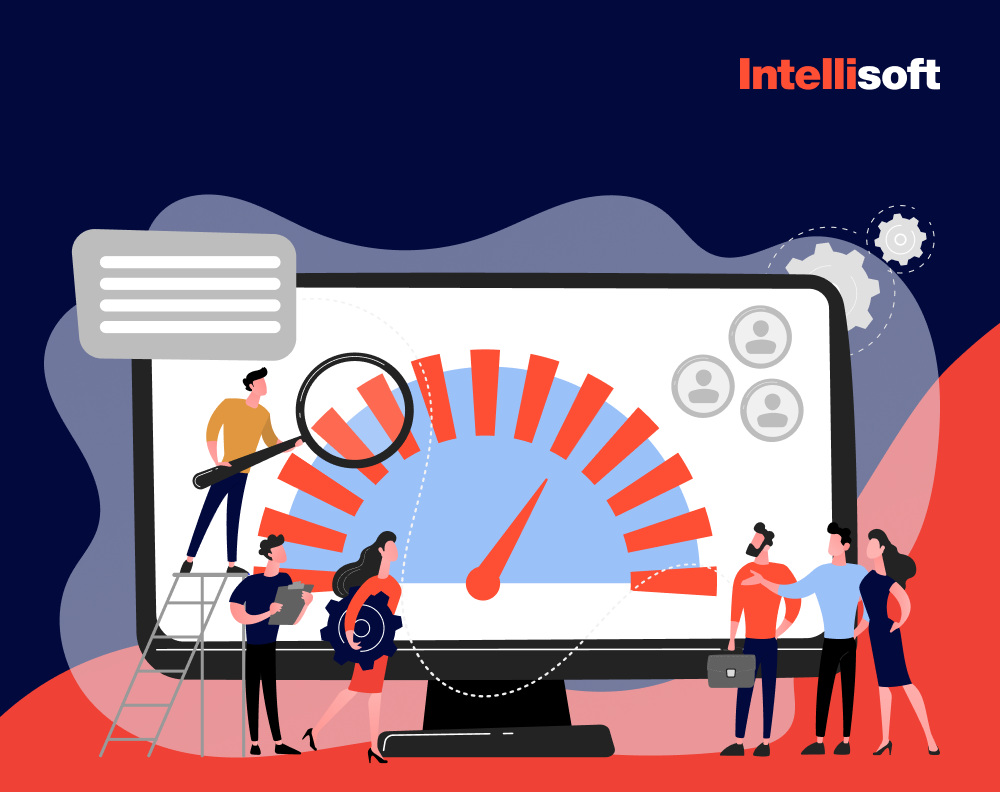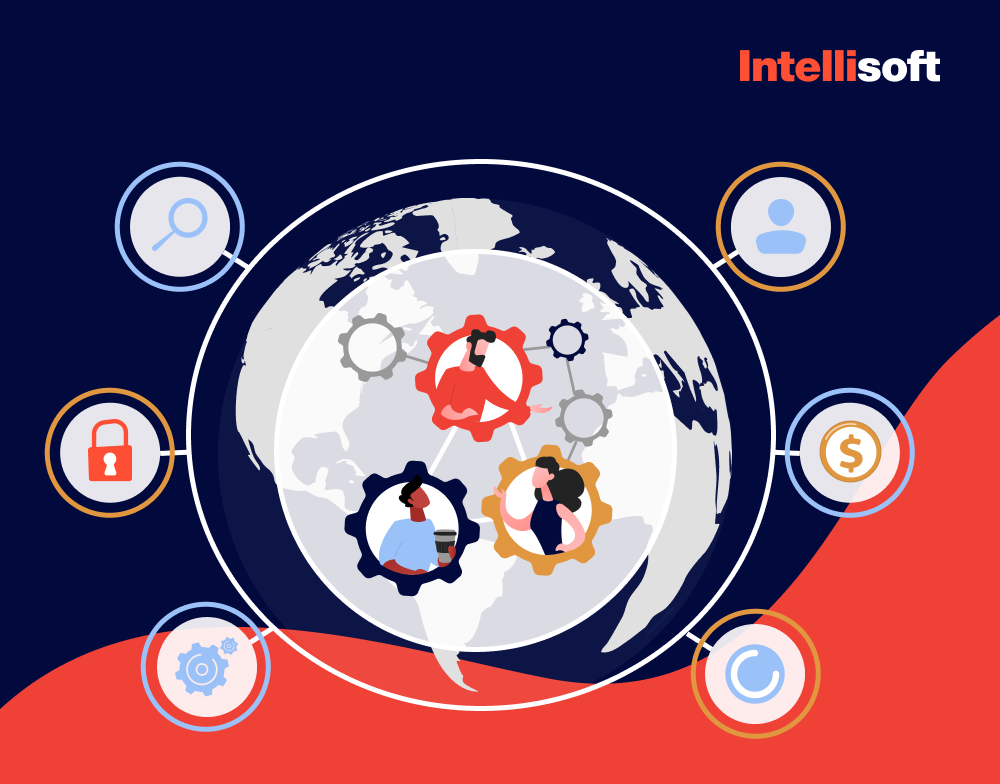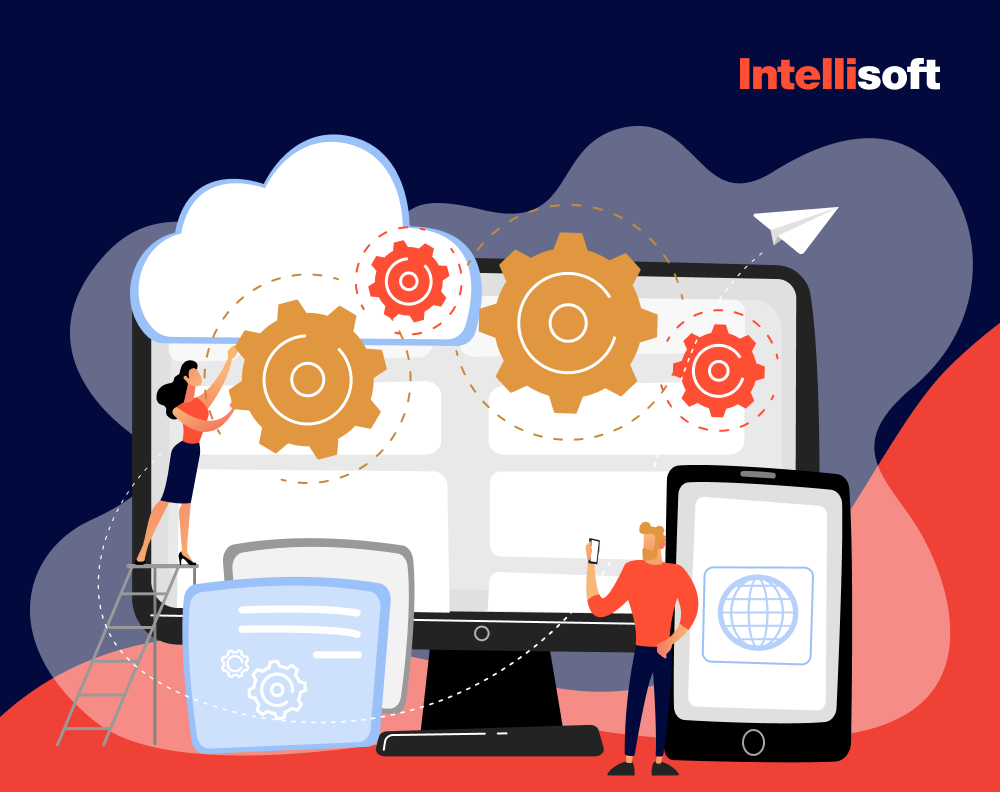Outsourcing has become a true savior for businesses looking to expand their operations, reduce costs, and gain the expertise they lack in-house. The global talent pool of experts offering outsourcing services keeps expanding, with the IT outsourcing market expected to spend around $1.3 trillion by the end of 2023 as companies adapt to digital transformation.
Many big companies opt for outsourcing as it helps them focus on core business tasks, manage their budget, and work with top talent. In fact, the IT outsourcing sector is the biggest contributor to revenue in the IT services market, with US$361 billion in 2021, and it is projected to reach US$777.8 billion by 2028.
Despite the number of outsourcing partners on the market and overall popularity of outsourcing, it is still a challenging process from start to finish as you need to know what to look for and how to manage the process, especially when you decide to change project requirements during the project implementation. Finding a reliable IT outsourcing partner can help you achieve maximum scalability and flexibility and save money while receiving a high-quality product, but you need to know what steps to take to achieve these results.
At IntelliSoft, we have been offering our outsourcing services for clients for over 15 years, and helping them manage changing project requirements, so we know all the secrets to the process and will guide you through the world of outsourcing. Let’s embark on this journey and learn how to find outsourcing partner, what factors to consider, and how to manage the changing requirements during software development.
Table of Contents
What Is An Outsourcing Partnership?
A software outsourcing partnership is a collaboration between a business and an external service provider, usually a company that specializes in outsourcing services. A business delegates certain tasks, projects, or functions to a partner and pays for the work. Unlike traditional client-vendor relationships, a true recruitment outsourcing partnership involves a more profound integration, where both parties work synergistically toward shared goals. It extends beyond a mere transactional association, fostering a long-term, mutually beneficial engagement.
Outsourcing Partner Versus Outsourcing Vendor: What’s The Difference?
Vendors are compensated for supplying specific goods or services, tackling particular challenges with fixed-priced offerings. While potential volume discounts exist, vendors generally operate within clear boundaries. However, they lack the depth of engagement and commitment seen in a true recruitment outsourcing partnership.
Thus, the main difference between a partner and an outsourcing vendor is in their commitment levels:
- Outsourcing vendor relationships are more straightforward as they address specific needs with services or goods according to specifications. They operate within defined parameters and remain uninvolved in your workflow or client interactions.
- An IT outsourcing partner serves as an extension of your business, displaying a commitment to a lasting relationship. Partners invest in long-term collaboration, focusing on creating value and impact. They actively share risks and rewards, aligning their interests with the success of your company.
Both vendors and partners can help businesses achieve their goals and optimize operations, but the choice depends on your specific needs and requirements. An outsourcing-partner can help your business in three main ways:
- A partner wants to build a meaningful relationship with your business and invest in essential resources to implement strategies for growth.
- An experienced partner has handled multiple challenges and varying projects, so their experience and expertise can help you gain valuable insights.
- An outsourcing-partner is both an expert in their field of work and is a perfect cultural fit for your organization.
Software Outsourcing Partnership Benefits
Outsourcing your business operations is incredibly beneficial, some of the benefits being as follows:

Cost savings
One of the primary reasons why businesses opt for outsourcing is cost savings. According to Statista, 59% of companies choose outsourcing because of this benefit. By outsourcing software development, organizations can reduce operational costs, optimize budget allocations, and allocate resources more efficiently, leading to substantial savings.
Access to specialized expertise and talent
Outsourcing brings the advantage of accessing a diverse pool of specialized expertise and talent. When you partner with an external team for software development, you tap into a wealth of skills and experience. This ensures that your projects benefit from the latest industry knowledge, innovative solutions, and a higher level of proficiency, ultimately contributing to the success of your software initiatives.
Flexibility and scalability
Another example of outsourcing partnership benefits is flexibility. Outsourcing grants you the flexibility to adjust your team size according to project requirements. Whether you need to augment resources during peak periods or scale down for efficiency, this adaptability ensures optimal productivity and cost-effectiveness.
Ability to focus on core competency
Delegating non-core tasks to an outsourcing-partner allows businesses to focus more intensively on their core competencies. This strategic shift enables internal teams to concentrate on essential aspects of the business, such as innovation, strategic planning, and core business functions. By freeing up internal resources, organizations can enhance productivity and drive sustained growth.
Competitive advantage
Embracing software development outsourcing can offer a distinct competitive advantage. The combination of specialized skills, cost-effectiveness, and focused core competency allows businesses to position themselves strategically in the market. This competitive edge empowers organizations to outpace competitors, respond effectively to industry changes, and achieve sustainable growth in the dynamic landscape of software development.
Indicators That You Need Outsourcing
Sometimes, it might be challenging to identify the right time to outsource. If you have been struggling with this, here are a few indicators that your business should consider outsourcing software development:
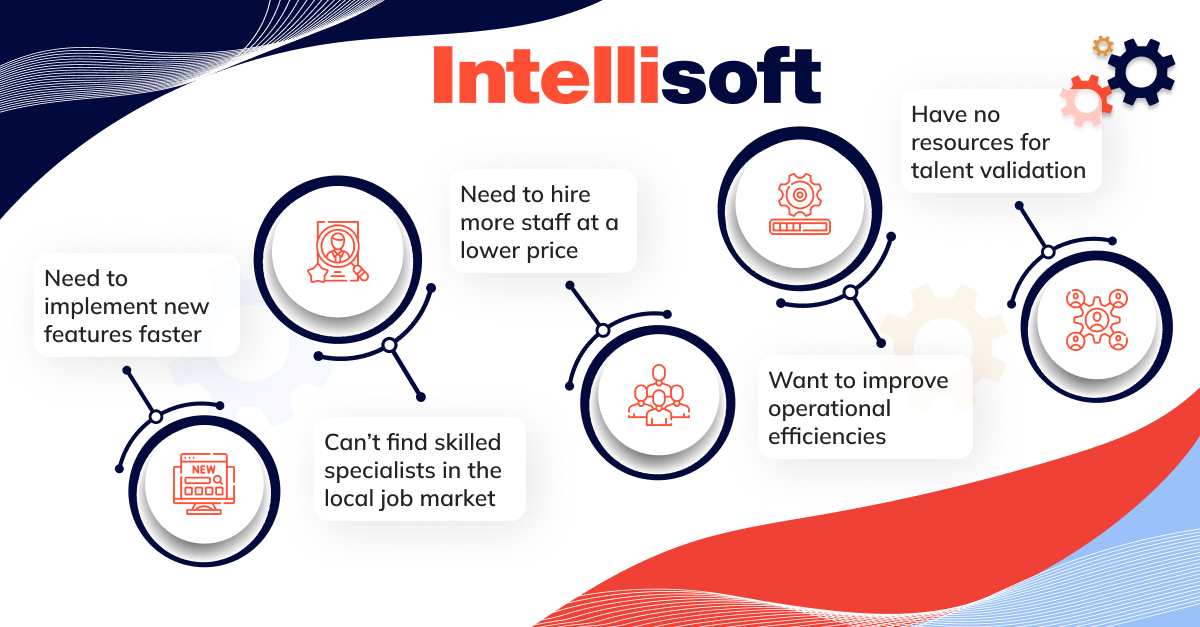
Need to implement new features faster
If the pace of implementing new features is too slow and is lagging behind your business demands, it’s time to outsource your software development operations. External software development teams can provide the agility and resources needed to accelerate feature development and keep your business ahead in a dynamic market.
Can’t find skilled specialists in the local job market
If you have been looking for an experienced specialist to hire but have experienced their lack in the market, it’s another indicator that outsourcing should be your choice. Outsourcing introduces you to a global talent pool, ensuring that you find the right experts for your projects without geographical limitations.
Need to hire more staff at a lower price
Expanding your development team can be a costly option, especially if you want to hire in-house experts. Outsourcing becomes a more attractive option as it helps you save money and scale up without compromising financial efficiency.
Want to improve operational efficiencies
If you have been looking for ways to improve your operational efficiencies, opt for outsourcing. External teams often bring in specialized skills and experience, helping you streamline processes and improve productivity, contributing to the efficiency of your software development processes.
Have no resources for talent validation
If your business lacks the resources for comprehensive talent validation, outsourcing can offer a solution. A reputable outsourcing IT partner often has established validation processes, ensuring that the specialists working on your projects are skilled, qualified, and aligned with your business objectives.
Related Readings
- Nearshoring. What is it and for Who?
- What is Staff Augmentation? A Model to Extend Your Team
- Outsourcing vs. Outstaffing Models: What Is the Difference and Their Pros & Cons
- Everything You Need to Know About Team Extension and Dedicated Team Models
- 10 Best Countries for Hiring a Dedicated Development Team
Why Software Requirements Change
Oftentimes, as you are working on developing software, the requirements can change in the middle of the process, forcing you to adapt to those changes quickly without compromising the success of your project. Changing requirements are often the result of various internal issues, such as defects or external factors (a new competitor). Managing these changes is much easier when working with an outsourcing IT partner as they often already have such experience and how to address these issues.
Why do software requirements change? Let’s look at the main reasons.
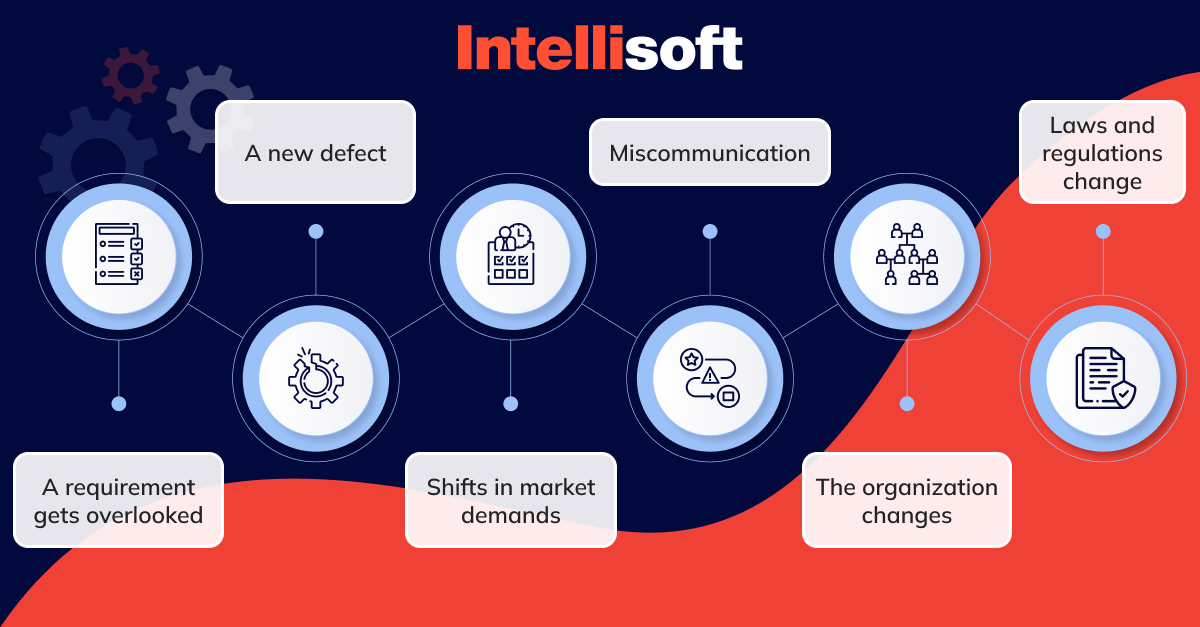
A requirement gets overlooked
Software development is a complex process comprising dozens, if not hundreds, of requirements. It’s not uncommon for stakeholders to forget one or a few requirements, which can significantly disrupt the development process and lead to detrimental results. Overlooking certain requirements may lead to additional testing, refactoring, or even infrastructure changes, and all of these processes take a lot of time and effort.
A new defect
Typically, the development team categorizes bug fixes alongside requirements. As defects are identified and documented, especially troublesome bugs can swiftly transition into high-priority requirements.
Shifts in market demands
The goal of any software is to help resolve users’ problems and meet their needs. These needs and user requirements are not stable; they can change at any time, so the team should be ready for that, or else the development process will stall. Moreover, as competitors add new features to their products, it can also change users’ needs, forcing you to adapt to these changes.
Miscommunication
How do you come up with the project requirements? It is the result of open communication between you and the development team, and this communication is sometimes not entirely clear and effective. A development team can misunderstand some requirements, leading to a new issue that must be resolved. The more issues with communication – the more new requirements arise during the development process.
Organization changes
Shifts in software development requirements can occasionally be influenced by corporate politics. The influence of stakeholders and internal support within the business can impact software decisions. In some instances, the priorities and preferences articulated by one stakeholder’s requirements may take precedence over others, driven by power dynamics and strategic maneuvering within the corporate landscape.
Laws and regulations change
Software catering to specific industries is subject to particular laws and regulations. For instance, healthcare regulations dictate software requirements, necessitating features such as data encryption and backup protection. Likewise, financial regulations shape software requirements related to transaction logging and auditability. It’s crucial for these requirements to evolve and adapt, accommodating any new or revised regulations that may arise during the project and the entire lifecycle of the application.
5 Steps on How to Nail Changing Project Requirements from IntelliSoft
What is the process of managing changes to the business requirements throughout the project? Project development always requires change, so it’s essential to find a strategic approach to manage the changing requirements. When you work with IntelliSoft as your development partner, we will take five crucial steps to ensure the success of your project:

Setting and documenting current requirements
First, we start with meticulous documentation of current project requirements. This process includes comprehensive analysis and precise documentation, helping us lay down a foundation for seamless adaptation as the project progresses. Moreover, this process allows us to evaluate the impact of changes on your project.
Clarifying the consequences of the changes
We go beyond recognizing change; our approach focuses on understanding the consequences of changing requirements. We thoroughly assess the implications and provide you with valuable insights that empower you to make more informed decisions. As a result, we ensure the changes align with project objectives without compromising outcomes.
Specifying change control procedure
At IntelliSoft, we employ a finely tuned change control process to systematically manage changes and ensure that after a meticulous evaluation and approval process, all changes are integrated in a controlled manner. This systematic approach prevents chaos and maintains project stability.
Creating a project schedule
Our project management involves crafting a dynamic schedule that factors in potential changes. This ensures flexibility without compromising deadlines or quality. The schedule becomes a living document that adapts to evolving requirements while maintaining a structured and efficient timeline.
Communicating with the team
Our approach is based on effective communication – we prioritize regular and transparent communication with the project team, keeping everyone informed and ready for changes. This ensures a collaborative environment where the team is well-informed, aligned, and ready to meet the challenges posed by changing project requirements head-on.
Tools and Technologies for Managing Evolving Project Requirements
Fortunately, managing to change project requirements in today’s digital age is much easier, thanks to numerous tools and technologies that assist you in this endeavor. These tools can help streamline communication, facilitate collaboration, and enhance project visibility.
Here are some of the most popular technologies for managing evolving project requirements:
- Project management software. Project management tools serve as a unified hub for managing project requirements, resources, and tasks. Common features include task tracking, document management, communication channels, and robust reporting capabilities. Tools such as Asana, Trello, or Jira enhance organization, change tracking, and collaboration, empowering project teams to operate efficiently and effectively.
- Collaboration tools. These tools help team members work together, no matter where they are located. Thanks to features like instant messaging, file sharing, and video conferencing, it is possible to always stay in touch with your employees and ensure that the communication is barrier-free and effective. You can use Slack, Microsoft Teams, or Google Drive for collaboration, real-time communication, and ensuring that everyone is on the same page when it comes to project requirements.
- Requirements management tools. These tools provide a structured approach to capturing, documenting, and managing project requirements. The main features of requirements management tools include version control, requirements traceability, and impact analysis. These tools include Jama Connect, IBM Rational DOORS, and others.
- Version control systems. Crucial for overseeing alterations to project documents and source code, version control systems play a vital role. These systems enable project teams to monitor and handle various versions of documents, guaranteeing constant access to the latest iteration. Utilizing version control systems such as Git or Subversion, project teams gain control over evolving requirements, ensuring a regulated environment for implementing and monitoring changes.
- Visualization tools. These tools assist project teams with understanding complex information through visual representations. You can use Microsoft Visio or Lucidchart to interconnect components, identify dependencies, and visualize project progress.
Outsourcing with IntelliSoft
At InteliSoft, our collaboration goes beyond mere software development; we are committed to the success of your projects, so we ensure that the team we hire for you consists of top talent and is the perfect cultural fit for your company. Our developers have worked for 10+ years on various projects, ensuring that our clients’ projects shine among the competitors and impress even the most discerning user.
We take pride in our long-term relationships with our clients, and our reviews on Clutch can tell you a lot about what type of outsourcing company we are.
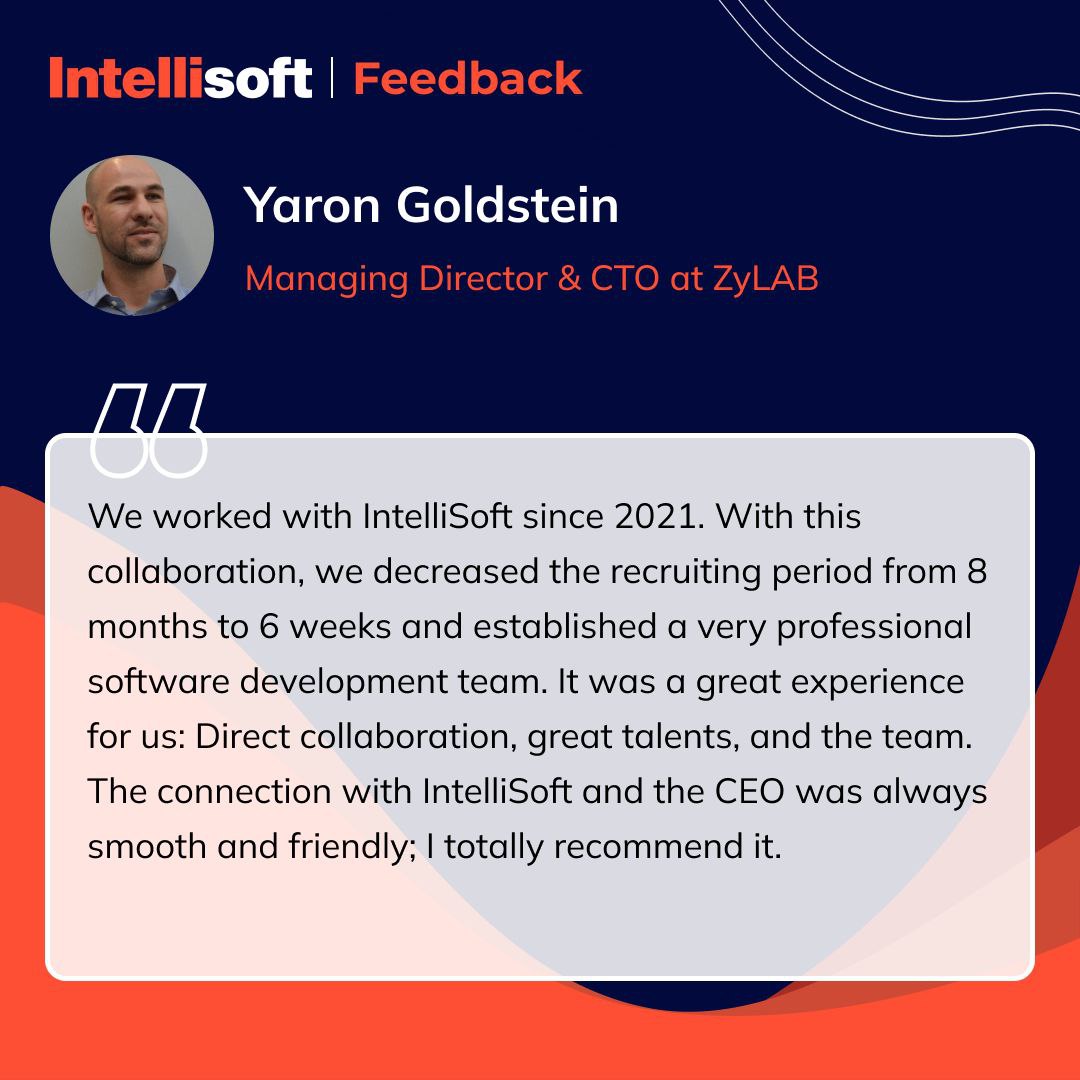
At IntelliSoft, we have a strong interest in an ongoing relationship with you; our collaboration will be long-term and built on trust, collaboration, and constant support. Our company’s goal is to ensure your sustained success, fostering a collaborative journey that evolves with your changing needs and aspirations. We also provide unparalleled skills and expertise at a reasonable cost that would be challenging to match with local specialists.
If you have been looking for the best IT outsourcing partner to help navigate through the mazes of software development, contact us, and let’s embark on this journey together.


